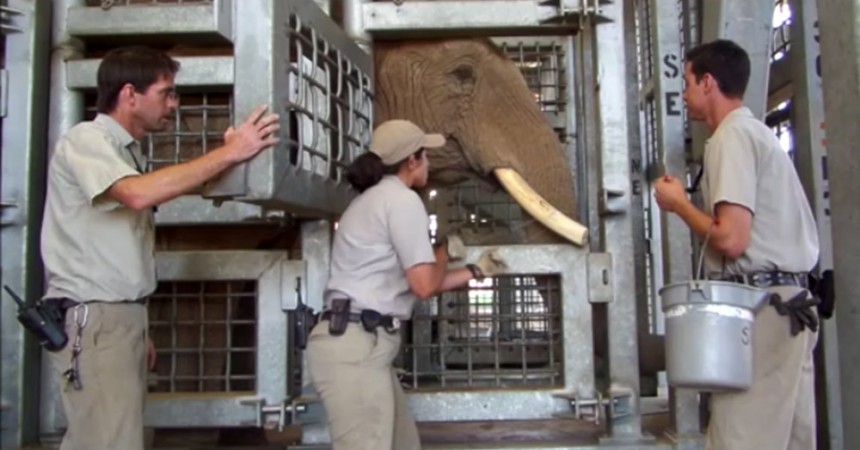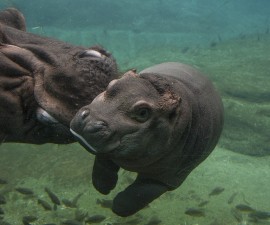We get a lot of questions about tusks here in the Conrad Prebys Elephant Care Center at the San Diego Zoo. Since we have both African and Asian elephants in our exhibit we care for quite a few individuals with tusks—five of our seven elephants have them. Caring for elephant tusks is pretty straightforward, but every once in a while they require additional maintenance. Many of you may have noticed that some of the elephants’ tusks have changed in size and shape over the last few years. Here’s why, but first a little background information—a kind of Tusk 101.
What are tusks? They are modified incisor teeth that grow separately from the molars inside of an elephant’s mouth. Tusks differ by not having the protective enamel coating that covers chewing teeth. And if they grow at all, an elephant only gets one set of tusks. In African elephants, both males and females can grow tusks. Among Asian elephants, only the males have tusks that grow externally and beyond the sulcus cavity (the lip area where the tusk is visibly seen). Female Asian elephants can grow small tusks called ‘tushes’, but they are rarely ever visible unless the mouth is open. Because tusks are teeth, there is a living pulp or root that sits in a hollow cavity at the base of the tusk.
Tusks are used for stripping bark off trees, fighting and playing with one another, and even for digging for water during times of drought. Not all elephants use their tusks the same way and some elephants use one tusk more than the other. Depending on available nutrition and the amount of wear and tear put on them, tusks can grow several inches a year.

A trusting relationship with keepers—and a few treats—results in the ability to radiograph Shaba’s tusks.
Basic tusk care includes cleaning the surface regularly and flushing out the sulcus cavity with water. To monitor the overall integrity of the tusks, we train each of the elephants to allow for radiograph imaging. The elephants are asked to hold a steady position and allow an x-ray plate to sit between the tusk and trunk so our veterinary staff can gather an image. These pictures give us the idea of where the pulp cavity lies inside the tooth. This is very important information; if an elephant injures or breaks its tusk near or at the pulp, the tusk is compromised. We have treated quite a few tusks over the years for various reasons, and this usually includes trimming them.
There are a few options we can utilize when a tusk needs to be trimmed. In the same way we train the elephants for radiographs, we also train them to allow us to trim their tusks. We generally use strong, thin steel wire to saw through the tusk, a relatively simple and safe way to remove part of the tooth in a scenario where the elephants allow us to do so. A normal trim can take anywhere between 15 and 30 minutes. All the while, the elephant receives food rewards as part of our positive reinforcement training program.
Late last year Shaba, one of our resident female African elephants, broke about 18 inches off of her left tusk. We were unaware of how she broke it, but immediately radiographed the remaining portion and trimmed it without compromising the pulp cavity. Both of her tusks have been trimmed recently and are relatively short. This was the best option for Shaba to be able to keep her tusks—and they will continue to grow. In fact, several of our elephants have had successful tusk trims over the last few years. We use the removed tusk portions in educational programs at the Zoo.
If during your next visit you notice shortened tusks or tusks that are blunt at the end, you will now understand why. Trimming is all part of normal tusk care and is always done in the best interest of our elephants.
Robbie Clark is a keeper at the San Diego Zoo. Read his previous blog, Happy Birthday, Zoo Elephants!







